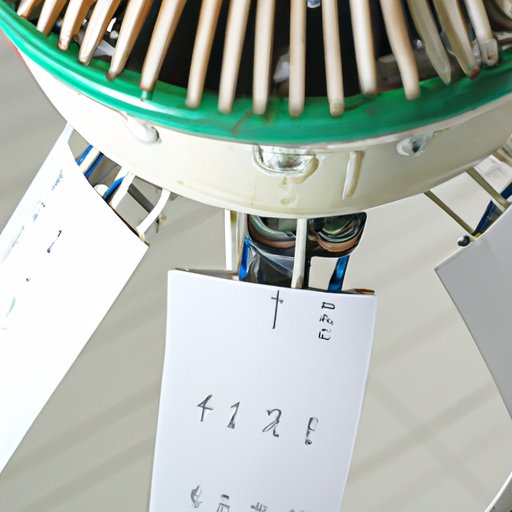
How to Balance a Ceiling Fan: A Step-by-Step Guide
Do you ever notice your ceiling fan wobbling or making strange noises? These are clear indications that your ceiling fan is likely unbalanced. Not only can an unbalanced ceiling fan cause annoyance, but it can also lead to damage and decreased performance. Luckily, balancing your ceiling fan is a quick and easy task that you can do on your own. In this article, we will guide you through the process and provide you with all the necessary information to balance your ceiling fan.
Understanding Ceiling Fan Balance
A balanced ceiling fan should operate smoothly and quietly. An unbalanced ceiling fan will wobble or shake, make strange noises or vibrate excessively. It can also cause the fan’s motor to work harder and generate more heat, which can lead to damage in the long term. Most commonly, an unbalanced ceiling fan is caused by weight distribution issues. The blades may have accumulated dust or debris, or their angle may have been accidentally tweaked. Regardless of the cause, balancing your ceiling fan is a quick and straightforward process.
Step-by-Step Instructions
The following steps will guide you through the process of balancing a ceiling fan:
1. Turn off your fan
Before you start, make sure to turn off the electricity powering your fan. This means switching off the circuit breaker or using the wall switch. Do not proceed until you are sure that the fan is completely still.
2. Inspect the fan for visible damage
Take a close look at your fan for any visible damage. This can include things like dents, cracks or bent blades. If you notice any damage, it may be best to simply replace the fan or have it professionally repaired.
3. Clean the blades and other components
Using a clean and dry cloth, gently dust off all the blades, mounts, light fixtures and other components of your fan. Over time, dust can accumulate on the blades and throw them off balance. A clean fan is also easier to work with and less prone to damage.
4. Identify the heavy blade
The next step is to identify the heaviest blade of your ceiling fan. To determine this, use a yardstick or tape measure to measure the distance from the ceiling to each blade, one at a time. The blade with the longest distance will be the heaviest. Label this blade with a piece of tape or a marker.
5. Use a balancing kit
A balancing kit is a simple tool that can help you achieve an excellent balance for your fan. These kits can be purchased at most hardware stores or online for a few dollars. Attach the balancing clips to each blade about an inch from the end opposite to the blade arms. Turn on your fan and assess if vibrations have decreased. If not, move the clip slowly closer to the motor until the vibrations are eliminated.
6. Test your fan
With everything put back together, turn your fan on and see if it works properly. Watch and listen for any wobbling or excessive noise. If the fan still seems shaky, your blades may need to be adjusted further or even replaced.
Troubleshooting Tips
Although balancing a fan is a simple and easy process, there are still some common issues that may arise. Some examples include:
1. Fan motor issues
If your fan continues to wobble despite all attempts at balancing, it could be an issue with the fan motor. This is rare, but it can happen. Reach out to a professional for a replacement if necessary.
2. Old or warped blades
If your fan is still off-balance after using a balancing kit, the blades may be damaged or worn out over time. In this case, it is better to replace the blades than to continue to try to fix them.
3. Faulty light fixtures
If you have a fan with a built-in light, the source of the noise or wobbling may be a problem with the fixture rather than the fan. In that case, try to determine the source of the problem, and replace the light fixture if necessary.
Importance of Maintenance
Regularly balancing your ceiling fan can help extend its lifespan and prevent damage. By doing this, you can prevent accidents and property damage and reduce your need for costly repairs or replacements. So, don’t neglect maintenance, as it is an essential part of home ownership.
Necessary Tools
Thankfully, you do not require much to balance your fan. Here is a list of things you will need:
- Balancing kit
- Clean cloth
- Ladder
Address Safety Concerns
When it comes to ceiling fan maintenance, safety should always be your top priority. Always turn off the power to the fan before attempting to work on it. Do not try to balance the fan by standing on furniture, as this can be dangerous and unsteady. Always make sure you are using a stable and reliable ladder.
Conclusion
Keeping your ceiling fan in balance is crucial for optimal performance and longevity. As we’ve discussed, all you need is a few minutes, some basic tools, and a little knowledge of what to look for. Regular maintenance may save you a significant amount of money in the long term by preventing damage. So, stop waiting and take action today to balance your fan and ensure safe operation.




